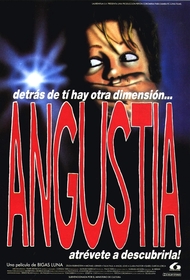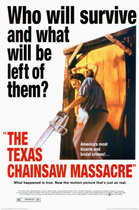Our editor-in-chief Nate Yapp is proud to have contributed to the new book Hidden Horror: A Celebration of 101 Underrated and Overlooked Fright Flicks, edited by Aaron Christensen. Another contributors include Anthony Timpone, B.J. Colangelo, Dave Alexander, Classic-Horror.com's own Robert C. Ring and John W. Bowen. Pick up a copy today from Amazon.com!
Anguish (1987)
One of the most depressing aspects of the Slasher films of the 80's was its penchant for franchises. It was not enough to craft a scary film that could stand on its own. There also had to be a colorful killer and a vapid plot, both of which can be resurrected again and again is an endless series of sequels. While studios promoted these films as product, better, and more ambitious films languished without an ad-campaign or an audience. Case in point is Anguish (AKA Angustia), the 1986 film written and directed by Spain's Bigas Luna. Recently released on DVD by Anchor Bay, it is revealed to be an overlooked gem.
Momma's boy John (veteran character actor Michael Lerner) is a hospital intern with dreams of becoming a doctor. Under the urgings of his mother (Zelda Rubinstein, Poltergeist), he performs a series of grisly 'operations' on those he believe have wronged him. This sets up a series of gory and psychedelic scenes, which are only the preface for the real story of Anguish. The film takes a sharp detour with the introduction of the characters of Patty and Linda (played by Talia Paul and Clara Pastor), young women who will be terrorized not only by John, but also by another killer (Ángel Jovè).
To give away anymore would be to reveal the central conceit, and the best surprise, of Anguish. Director Luna at first appears to be telling a simple story of gore-drenched lunacy, but has bigger ideas. Blurring the line between reality and the fantasy world of film, Luna suggests that the audience and director are complicit with the carnage on the screen.
Anguish is well made, with first-rate performances, special effects, and wide-screen camera work that defies its small budget. Confined to just a few sets, Luna gets the most of them. The climax, taking place no in one, but two theaters, and featuring clips from the silent The Lost World, plays with a sly irony that must have only been doubled when the film played in the theaters.
While nominally a slasher film, Anguish borrows more from Hitchcock and Fulci than from John Carpenter. It has scenes of tension, humor, splatter, and realistic terror that more generic slashers can't touch. A relatively unknown film, from an unfamiliar director, Anguish deserves a bigger audience. Director Bigas Luna crafted one of the best, and most original, slasher films of the 80's.








